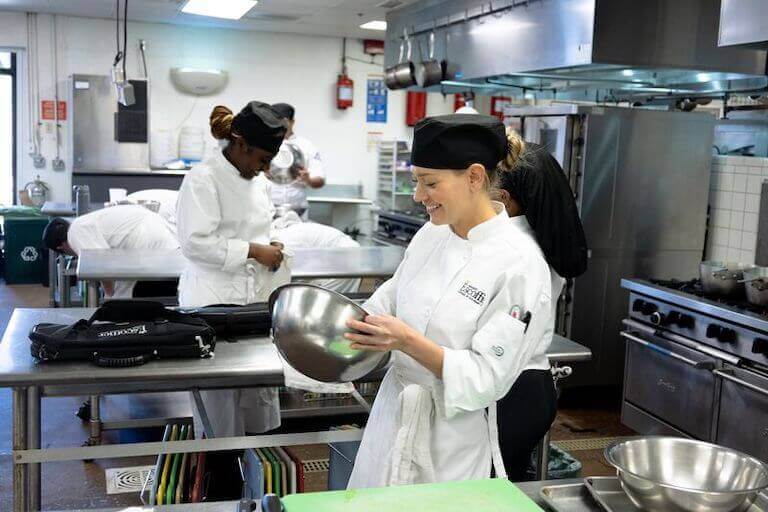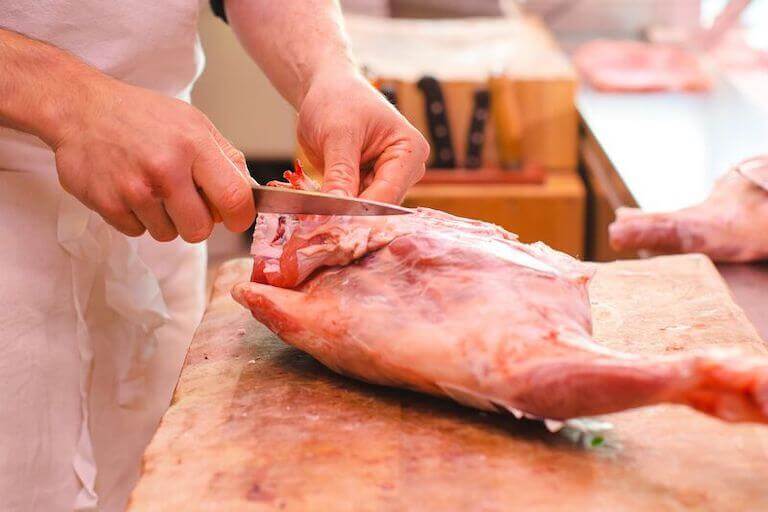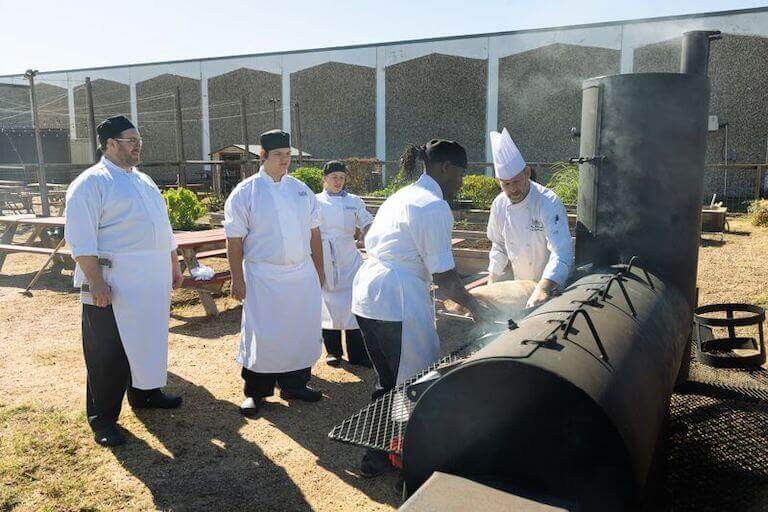Perhaps you already know the basics of writing a chef resume.
It starts with sharing your past work experience, including the company where you worked, your role, the dates you were employed, and your basic responsibilities.
But within that framework, how can you make yourself stand out?
That’s exactly what we’re going to discuss in this article. Whether you’re applying for your first cook job or looking to get an executive chef position, these tips can help you to attract the notice of hiring managers and move on to the interview process!*
1. Highlight Your Education and/or Certifications
Not all cooks and chefs have a degree or diploma from a culinary arts program. So if you have an educational credential, make sure to call it out! It can be a valuable differentiating factor in your application.
For recent graduates with very little work experience, adding some details from your time in school can help fill in your resume. For example, if you won an award or scholarship or made the dean’s list, that could be valuable information to include.
If you’re further out from graduation and have lots of experience, you can simply list your degree or diploma, the culinary school you attended, and the year you graduated.
You should also list any chef certifications. Many cooks and chefs have Food Handler certifications through ServSafe or other training providers. This may be required by some foodservice establishments or by city/state regulations. So it could help to check that box before you’re even hired!
You could also list certifications from trade groups like the American Culinary Federation. These credentials can help show that you’re serious about improving your skills and growing in the industry.

Share your culinary education on your resume to show that you’re invested in the industry!
2. When Listing Your Work Experience, Externships Count!
A new cook who doesn’t have much work experience may worry that their resume will be too short. But if you graduated from any Escoffier program, you already have at least one relevant job to include—your culinary industry externship.
All Escoffier programs include at least one hands-on externship as part of the curriculum. This experience can show the hiring manager that while you’re new to the industry, you’re not completely green.
For resume purposes, treat the externship just like a job. What did your department or station excel in? What kind of additional responsibilities did you earn during your time in the role?
Everyone has to start somewhere, but the externship can show that you’ve put in the effort to put your education into practice!

Externship experience could help applicants reach the interview stage.*
3. Customize Your Resume for Each Application
Most job applicants write their resumes once and distribute them to many potential employers. But a much smarter approach is to customize your resume for each job that you apply for.
Fortunately, job applicants have a handy how-to guide to help with this process…it’s the job posting itself!
Employers often list exactly what they’re looking for in an applicant. So you can use the posting details to reverse-engineer your resume.
For example, let’s say you are applying for a cook or chef position at a farm-to-table restaurant that highlights a “nose-to-tail” approach to each animal they cook. The job posting specifies that they need a chef who knows the different cuts of beef, pork, lamb, and chicken, and the best uses for each. And perhaps you have experience in butchery. This is highly relevant! Your resume should highlight this skill, as it fits right into the restaurant’s ethos.
Now let’s say you’re also applying for a position at an Italian restaurant that specializes in fresh pasta. Your butchery experience may not be as relevant here. But if you were in charge of making fresh pasta at your previous job or took a pasta course, that is relevant. You have limited real estate on your resume, so make the most of it by highlighting the most relevant details for each position you apply for.
Yes, it’s more work. But it’s also much more likely to help get you that dream job!*

Calling out relevant details (like butcher experience) could help your resume to catch the hiring manager’s attention.
4. Focus on Accomplishments
We often think of our work experience in terms of day-to-day tasks, rather than the big picture. But the “big picture” is exactly what we want on our resumes.
Help the employer to envision your potential contributions to their business by sharing specific accomplishments. For example, did you put a new dish on the menu at your last restaurant? Did you spearhead an upgraded inventory system that helped reduce waste? Did the restaurant get any awards while you were on the team?
It can also help to tie your work experience to numbers. Instead of saying, “Executed menu in a high-volume environment,” get specific! How many covers did you serve each night?
Instead of a general statement about a fast-paced environment, you could say “Worked with team to meet tight time standards (6 min for appetizers, 12 min for entrees, 5 min for desserts).”
If you had private events onsite, what kind of details can you share? Did you serve private parties of up to 500 guests? Did you serve any big-name clients?
To sell yourself, you need to bring the proof! So skip the generalizations and get specific.

Highlight the specifics to make your resume stand out and get you closer to the interview.*
5. Keep It Brief
There’s a famous quote by Blaise Pascal (often incorrectly attributed to Mark Twain): “I would have written a shorter letter, but I did not have the time.”
It’s a challenge to keep our thoughts succinct. But in a resume, that’s just what you should do.
For some positions, a hiring manager could see dozens of resumes. And they’re looking for reasons to weed out some of the applicants. A four-page, single-spaced resume in 10-pt font is just such a reason.
Resumes should be kept to a single one-sided page. Edit ruthlessly! Cut any jobs from over 10 years ago. And for roles that are more recent but not as relevant, keep the details brief. There’s no need to explain every aspect of every job you’ve ever had.
Only get into detail about your most recent jobs and those that most closely match the job description.
6. Call Out Any Unique Skills
A skills section on your resume can highlight your special areas of knowledge.
For a new cook, your skills may be more general topics that you studied in culinary school like “food safety and sanitation” and “food cost analysis.”
But when you have some experience, you may have more skills to draw on. For example, if you’re a whiz at a specific POS system like Toast or TouchBistro, you may wish to include that. These systems can be complex, and there is value in having someone on the team with that technical skill.
You could also include proficiency with any specialty equipment like dehydrators or smokers. If you worked somewhere that combines customer service with cooking, like a sushi counter or hibachi grill, you could call out your multitasking and customer service skills.
The skills section is a great place to include valuable knowledge that may not fit within the experience section, so take advantage of it!

If you have any education or experience in special skills—like smoking meat—that could help with applications to certain positions.
7. Don’t Forget the Contact Info!
Back in the day, resumes were distributed by mail or by hand. But today, they’re usually sent by email or as an attachment to an online application form. You may think that electronic submission negates the need to include your contact information on the resume itself.
This is a mistake!
Resumes are often printed out and may be separated from a cover letter or cover email—and from the contact information that you included. So make sure to include a phone number, email address, and mailing address on your resume itself to make it easy to contact you.
You can also include the URL for a professional website and even relevant social media profiles. For example, if you have a chef-specific Instagram account where you share your food, that may help you. Just make sure any social media accounts are appropriate for a potential employer before you share them!

Don’t put any barriers in the way of that interview! Share your contact information in an easy-to-spot place on your resume.
8. Bonus Tip! Always Send Your Resume as a PDF
Don’t send your resume out in a word processing format, like Microsoft Word or Google Docs. The device or program that the manager uses to open the document may tweak your resume’s format, making you appear messy and unprofessional.
Instead, always share your resume as a PDF. This is a static format that will display exactly the same way on every device, no matter what kind of PDF reader or hardware the manager is using.
Your Resume Is Your First Contact, So Make It Count!
Writing a cook or chef resume is a skill that takes a bit of practice. But it’s well worth the effort if it can get you closer to your dream job!
If you need more help with your resume or job search assistance, Escoffier students and graduates have access to Career Services help which can include resume writing assistance and interview preparation.
And if you’re not an Escoffier student yet…what are you waiting for?
Contact our Admissions Department to discuss your goals for the future…and which program could help you get there.*
To learn more about culinary careers and getting the job, try these articles next:
- What Culinary Training Do You Need for a Professional Cooking Career?
- 5 Alternative Careers Out of Culinary School
- 8 Tips for a Successful Restaurant Manager Interview
*This information may not reflect every student’s experience. Results and outcomes may be based on several factors such as geographical region or previous experience.

